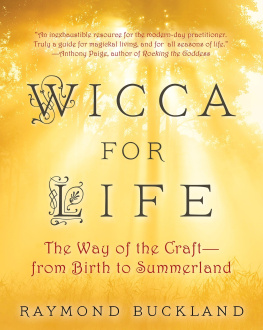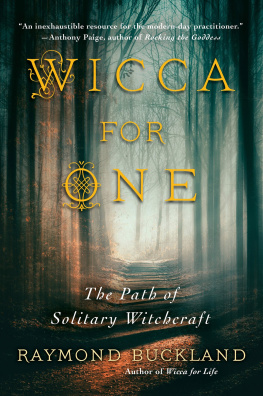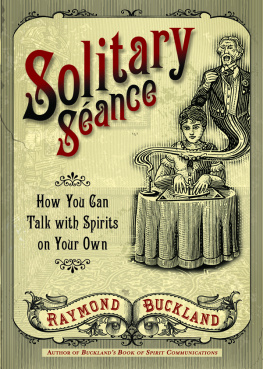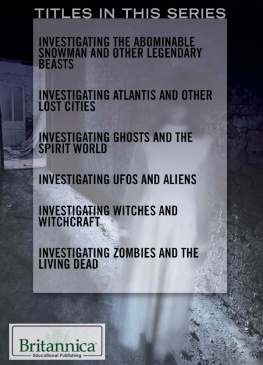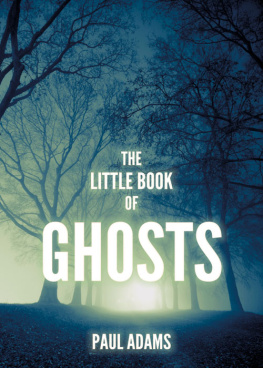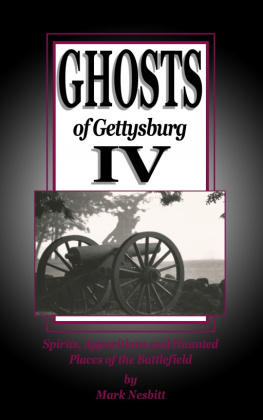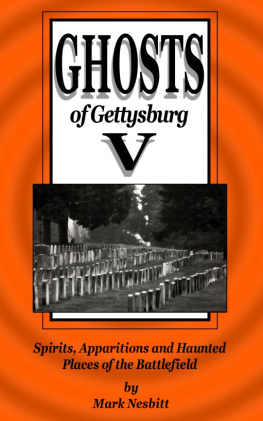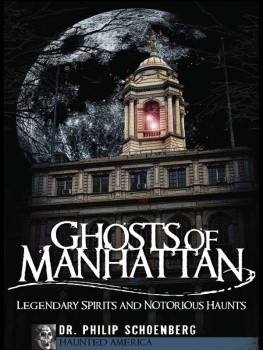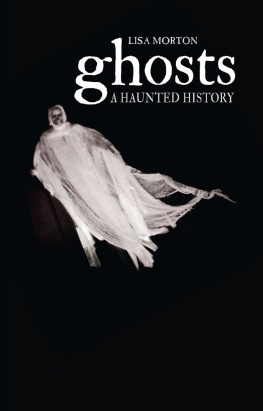
First published in 2009 by
Red Wheel/Weiser, LLC
With offices at:
500 Third Street, Suite 230
San Francisco, CA 94107
www.redwheelweiser.com
Copyright 2009 by Raymond Buckland
All rights reserved. No part of this publication may be reproduced or transmitted in any form or by any means, electronic or mechanical, including photocopying, recording, or by any information storage and retrieval system, without permission in writing from Red Wheel/Weiser, LLC. Reviewers may quote brief passages.
ISBN: 978-1-57863-451-4
Library of Congress Cataloging-in-Publication Data available upon request.
Typeset in Adobe Jenson and Priori Sans
Cover photographs istockphoto.com
Cover illustrations Anne Brush
Original illustrations on pages 8, 23, 30, 36, 40, 47, 60, 68, 75, 80, 94, 98, 107, 110, 114, 119, 124, 139, 140 and 161 2009 by Anne Brush
Illustrations on pages 65, 66, 104, 129, 135, 164 and 165 Miss Mary
Illustration on pages 87 Pepin Press
Photographs on pages 11, 59, 79, 91, 109, 142, 177, 189 Dreamstime
Photographs on pages 38, 69, 76, 82, 113, 130, 138 istockphoto.com
Photographs on pages 19, 27, 49, 89, 88, 101, 121, 127, 133, 153, 166 Veer
Printed in Canada
TCP
10 9 8 7 6 5 4 3 2 1
The paper used in this publication meets the minimum requirements of the American National Standard for Information SciencesPermanence of Paper for Printed Library Materials Z39.48-1992 (R1997).
www.redwheelweiser.com
www.redwheelweiser.com/newsletter
For Tara
The way to find out whether or not anything exists is to depend on the testimony of the ears and eyes of the multitude. If some have heard it or some have seen it, then we have to say it exists. If no one has heard it and no one has seen it, then we have to say it does not exist. So, then, why not go to some village or some district and inquire? If from antiquity to the present, and since the beginning of Man, there are men who have seen the bodies of ghosts and spirits and heard their voices, how can we say that they do not exist?
Mo Tzu, Chinese philosopher 470391 BCE
Contents
Introduction
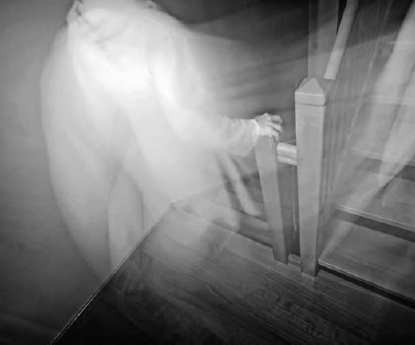
Everybody loves a ghost story. Why? Probably because we all like to be frightened though only when we know we're actually safe! Ghosts themselves don't have to be frightening (returned loved ones or pets are not, for example), but it's the idea of a ghost that thrills and chills. Some of the most famous ghost stories are in Charles Dickens's A Christmas Carol, Shakespeare's Hamlet, and Oscar Wilde's The Canterville Ghost. Popular movies, such as Ghost and The Ghost and Mrs. Muir, have added their impact. And today's television reality ghost-hunting shows have burgeoned into ghosthunting clubs and societies scattered over the Internet.
So what is a ghost? It's a visual or auditory occurrence that is out of the ordinary, unexplainable by traditional criteria. The word comes from the Old English gst. There have been various definitions: the apparition of a dead person, an energy field that makes itself known by assuming the shape of a person, the spirit of a person who was once alive, an incorporeal being.
Ghosts are known around the world, by all peoples of all ages. They have been showing up since the beginning of recorded history. There's tremendous variety to ghosts, as will be seen. Among the different types are ancestral ghosts, battlefield ghosts, noisy ghosts, and even animal ghosts. There are orbs and flashes of light, ghostly mists, brilliant squiggly lines of energy that appear on photographs. There are ghost trains, cars, airplanes, and horse-drawn carriages.
It is said that the belief in ghosts grew out of the universal human need for assurance of survival after bodily death. If death is the end of everything; if time stops dead in its tracks for the deceased, then there would be no such thing as a ghost. But the appearance of a ghost signals that death is not the end; that some form of energy connected to the deceased continues.
In general, there are two types of ghosts: those that are seen and those that are heard. However, the form that the visual ghost takes varies tremendously, from the appearance of a much-loved but deceased dog to a floating light that cannot quite be pinpointed. There are ghosts of known deceased people and animals, and there are ghostly appearances by unknown spirits, some of them otherworldly. Europe, Australia, Japan, Polynesia, India, in addition to America all countries have their ghosts and spirits.
It used to be that the dead were buried in winding sheets (a shroud, or cloth in which the body was wrapped); this led to the depiction, by artists, of a ghost dressed in a white sheet think of the cartoon character Casper the Friendly Ghost! Yet most real ghosts are seen dressed much as they appeared when alive.
Many ghosts are seen at places where they experienced a traumatic occurrence, or where they died, oralternativelywhere they had known great happiness. Such events are cause for the deceased to be loath to leave, to move on into the light, and is generally an indication that the spirit is either unaware that death has occurred or is simply reluctant to accept the fact. There are individuals and groups, here on earth, who work specifically to help such earthbound spirits.
Not all ghosts are of the transparent variety! Many appear as dense as when they were alive. And whether solid or transparent, a lot of ghosts have been photographed. Most such photographs come about accidentally, with inexplicable images appearing in what should have been quite ordinary photographs. In 1861, a Boston photographer named William Mumler was at the studio of a photographer friend (Mrs. H. F. Stuart's Photographic Gallery) and was amusing himself with the equipment. He wanted to take a photograph of This was the start of spirit photography. Mumler's wife Hannah, incidentally, was a Spiritualist clairvoyant and healer.
As well as other ghost portraits, a tremendous number of fraudulent photographs were taken, with the perpetrator indulging in double exposures and other photographic tricks. Today, however, with the advent of infrared and, more especially, digital cameras, trickery is technically much more complicated. It can still be used to produce resultsin fact the results can be even more amazing than of oldbut it takes knowledge and skill. The classic photographs of ghosts, from the past, have been examined by experts and proven not to have been tampered with.
Another name for a ghost is an apparition This, in fact, is the term generally preferred by parapsychologists. Contrary to popular opinion, apparitions are not always of the dead; they can be appearances of the astral bodies of the living.
When there are wars, with many people killed, there are large numbers of ghost sightings recorded. Young men and women killed in battle frequently appear to their loved ones at the very moment of death. Shortly after the Society for Psychical Research was founded in 1882, an attempt was made to collect firsthand reports of apparitions. The majority of these turned out to be of the crisis variety. The full report was published in book form, in 1886, as Phantasms of the Living.
Whole battles have been seen in ghostly form, with the apparition of fighting men visiblesometimes to a large number of peoplemany miles from the scene of the battle. When a group of people have a collective sighting, invariably the observers see the apparition from different viewpoints, depending upon where they are standing at the time. It is, therefore, as though they are seeing the actual event rather than a projection of it, as in a movie scene. One person may see a particular figure full face while another, standing somewhere else, may see a profile.
Next page

